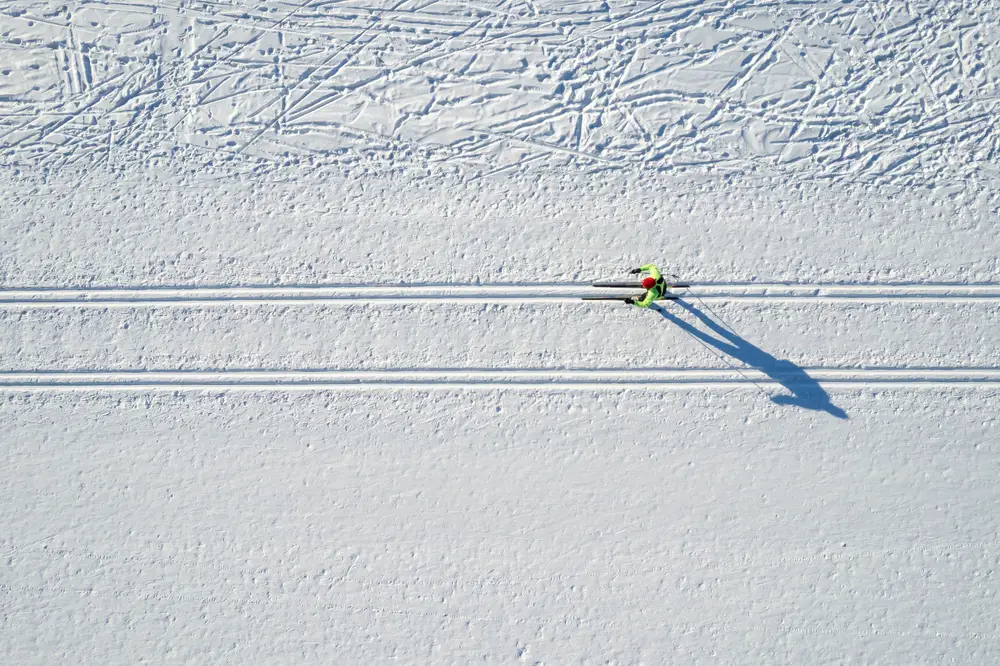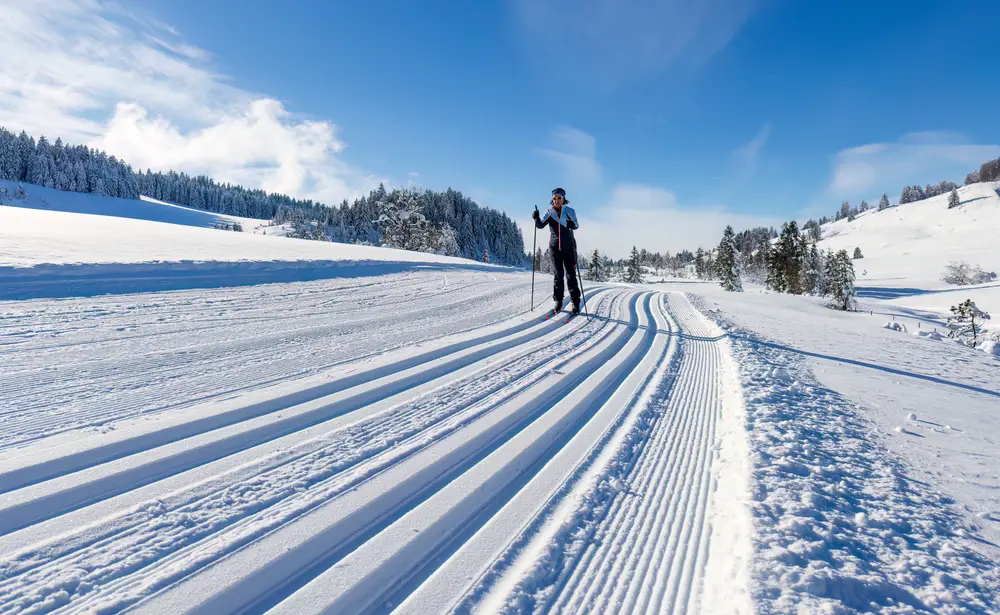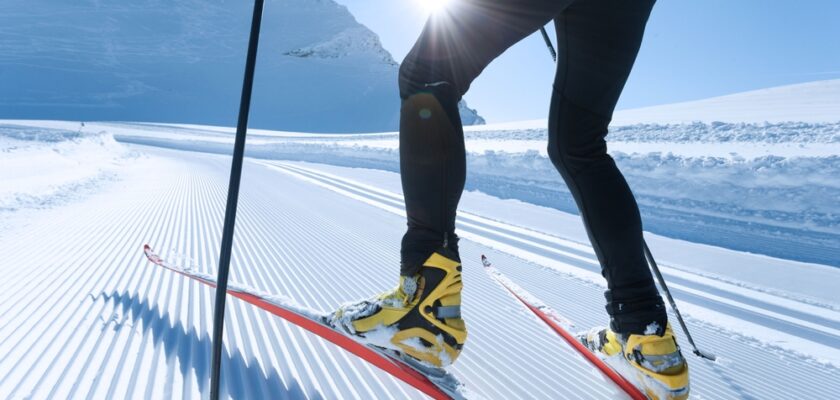Cross country skiing is a type of skiing that demands endurance, technique and strategy from its athletes. Unlike alpine skiing, which is practiced on prepared slopes with steeper descents, cross country skiing is practiced on varied terrain, with gentle ascents and descents, usually in forest areas and open fields.
This sport can be done both competitively and recreationally, and is an excellent physical activity that provides intense contact with nature. To do this, however, you need to be aware of the rules of the sport in order to practice it correctly.
In this article, then, we’ll explore the rules of cross country skiing in detail. You’ll learn about the structure and size of the slopes, the duration of the competitions, how the scoring is done, the number of participants and even the infractions and penalties!
So get ready to learn the rules of cross country skiing and stay up to date with the sport!
Open your Betano account and get up to 1,000 reais in bonuses.
PIX payments, live games and super odds!
Click here to open your account!

Cross country skiing rules: complete list
- Competition;
- Duration;
- Scoring and ranking;
- Competitors;
- Equipment;
- Styles;
- Infractions and penalties;
- Weather.
Cross country skiing rules: competition venue
Cross country ski slopes vary in terms of structure and size, depending on the type of competition and the level of the skiers.
In international competitions, for example, the slopes must be homologated by the International Ski Federation (FIS) and follow strict standards. The slopes are between 2.5 and 15 kilometers long, and may include several laps to total the distance of the race.
The track must also be at least six meters wide to allow overtaking and ensure the safety of the competitors. It must also include climbs, descents and flat sections to test the skiers’ endurance and technical ability.
They also need to be prepared in advance to ensure that the snow is compacted and suitable for skiing and practicing the sport.
Cross-country skiing rules: duration
In cross-country skiing, the duration of competitions can also vary according to the sport. There are sprint races, which are relatively short and last only a few minutes, and long distance races, which can last several hours.
Check them out:
- Sprint: distances of up to 1.8 km, usually completed in three to four minutes.
- Distance races: these can range from 5 km to 50 km, depending on the category (men’s or women’s) and the race format (individual or team).
- Relays: these take place with teams of four skiers, each completing a part of the course, which can vary from 5 km to 10 km per section.
- Marathons: are run over distances of more than 50 km, over varied terrain.
Cross country skiing rules: scoring and classification
Scoring in cross country skiing is based on the total time each skier takes to complete the race. Understand better!
- In classic format competitions, for example, the skier with the shortest total time is the winner.
- In sprint competitions, qualifying rounds are held until the finalists are determined, with the fastest skier in the final being declared the winner.
- In World Cup events and World Championships, points are given to skiers based on their placings.
For example, the first-placed skier might receive 100 points, the second 80, the third 60, and so on. These points are accumulated throughout the season to determine who the overall champions are.
Cross country skiing rules: competitors
The number of competitors in a cross country ski race varies greatly. In high-level competitions, such as the Olympic Games or the World Cup, the number of participants is limited by qualifications and rules set by the FIS.
In amateur or regional events, however, the number of competitors can be much higher. In relay races, each team is made up of four skiers. In individual races, all competitors start at the same time or at intervals, depending on the race format.
Cross country skiing rules: equipment
The equipment used in cross country skiing is regulated by the FIS. Skiers must use skis, poles and boots appropriate for the sport.
Skis, for example, must have a specific length and width, and poles must not exceed the skier’s height when standing on the skis.
The boots, meanwhile, must be attached to the skis using special bindings that allow the heel to be flexible, which is essential for cross country skiing techniques.
The use of aerodynamic racing suits is common, and skiers can also use goggles and hats to protect themselves from the weather.
Cross country skiing rules: styles
There are two main cross country skiing techniques: classic style and freestyle (or skating). Each technique has its own rules, check them out!
- Classic style: in this style, skiers must follow parallel tracks in the snow, moving in an alternating sliding pattern. The technique is usually used in traditional races and on flat terrain.
- Freestyle (Skating): Here, skiers use a similar movement to skating, sliding the skis sideways at an angle, propelling themselves with the poles. This technique allows for greater speed and is common in distance and sprint races.
Cross country skiing rules: infractions and penalties
Cross country skiing has strict rules and penalties. Here are the main ones:
- Improper use of techniques: using the wrong technique in a section designated for a specific technique is prohibited in cross country skiing.
- Interference: the athlete may not deliberately block or hinder another competitor.
- Non-regulation equipment: using equipment that does not comply with FIS specifications can result in penalties.
Penalties for these infractions in cross country skiing can range from warnings to disqualification, depending on the severity of the incident. Time penalties can also be applied to the athlete, with seconds or minutes added to the competitor’s total time.
Skiers must also adhere to a code of conduct that emphasizes respect for opponents, officials and the environment. As a result, any unsportsmanlike behavior, such as abusive language, destruction of property or lack of respect for opponents, can result in penalties or disqualification.
Respect for the environment is also extremely important in cross country skiing, as competitions are often held in national parks or nature reserves. Skiers should avoid leaving litter or damaging local vegetation.
Cross country skiing rules: weather
Cross-country skiing competitions are highly dependent on the weather, as they take place in winter.
Fresh snow, extremely low temperatures or strong winds can all affect the race. In extreme cases, therefore, the competition may be delayed, shortened or even canceled to ensure the safety of skiers.
Competition organizers must be prepared to adjust the course or rules as necessary to respond to unforeseen weather conditions.

Cross country skiing rules: complete list
- Competition;
- Duration;
- Scoring and ranking;
- Competitors;
- Equipment;
- Styles;
- Infractions and penalties;
- Weather.
If you liked this article on the main rules of cross country skiing, take the opportunity to continue browsing the site and keep up to date with the world of sport!



